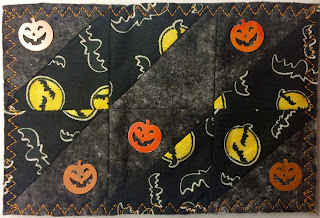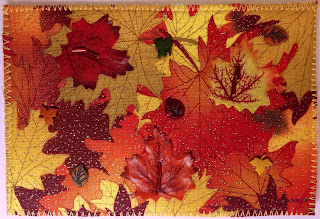Sheree McKee
sewfabsew.blogspot.com
SewFabSew@aol.com
I WON the lottery in October... a fiber postcard lottery that is! But this lottery makes me just as happy as any $$$ could. For the last 3 weeks, nearly a dozen surprise postcards have been arriving at my home in Michigan.
My FAV swap group holds a monthly FPC (fabric postcard) lottery. Anything goes! Your theme, your subject, your experiments! PostCardMailArt is a Yahoo Group with 80+ swapping members.
Here's what arrived ~
 |
| Alesia in Tennessee My FAV colors of purple and orange! |
 |
| Barbara in Maryland Recycled selvedges from fabric yardage turned into hexagon quilt shapes |
 |
| Beverly in Georgia Inserted a Frankie motif from a Halloween fabric |
 |
| Sheree McKee in Michigan I used up my seasonal ribbons and trims, but since I was the winner for October this was moved into the following months lottery |
 |
| Sue Balchak in California Glow in Dark fabrics and threads really do glow! |
 |
| Judy in B.C. Canada Pieced triangles and sequin pumpkins |
 |
| Regina in Ohio Sparkly fabric, layered leaves, buttons and bugle beads |
 |
| Norma in Florida She actually tied real acorns on with twine! Note: this costs extra to mail, due to thickness of envelope |
 |
| Kayenderes in New York The cutest dimensional skeleton and Boo ribbon. Another style that takes extra postage due to special handling |
 |
| Christine in Victoria, Australia Adorable symbols of New Zealand and Australia |
 |
| MaryLou in Ontario, Canada Black sheep landscape with crewel embroidery |
Check-out the PostCardMailArt group by joining and watching how the swaps work. There are many active members who will help you out with swapping protocol. Join the discussions, and ask questions about swapping responsibility.
Owner and Moderator, Sue Balchak from California, formed the group in fall of 2008. And I've been an active member for about four years.
Subscribe by contacting
postcardmailart-subscribe@yahoogroups.com
Another previous blog post of mine ~
Puffy Pumpkins



























